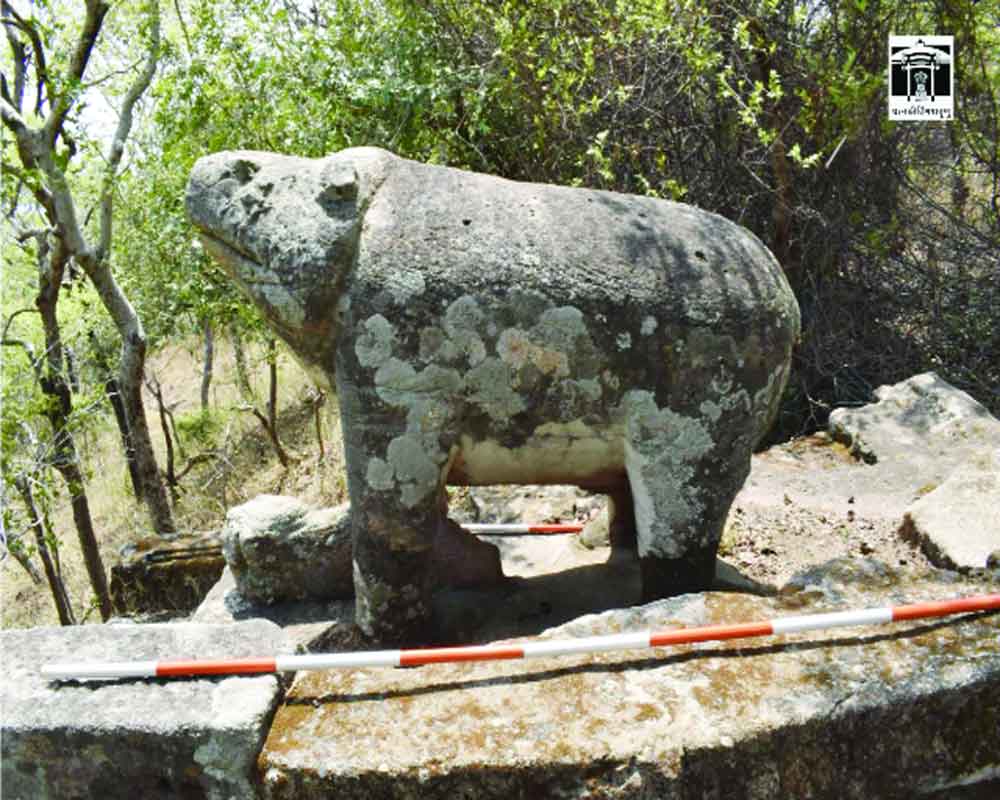The Archeological Survey of India (ASI) has stumbled upon a historically-rich treasure trove in Bandhavgarh, Madhya Pradesh. The ASI team has found 26 caves, mostly Buddhist, ranging from the 2nd century to 5th century, of the Mahayana sect and remains of Buddhist structures and mural inscriptions bearing names of cities like Mathura and Kaushambi in old
scripts.
During the exercise held from May 20-June 27 in an area sprawling around 170 sq km at the Bandhavgarh Tiger Reserve, the ASI’s Jabalpur circle found many ancient sculptures, including large monolithic sculptures of various avatars of Vishnu like “Varaha†and “Matsyaâ€, and “board games made in natural caves.â€
“This is for the first time since the 1938 exploration by archaeologist NP Chakravarti that ASI has explored Bandhavgah. Many structures of the area had already been documented, we reported and documented many more structures now, including ancient caves, temples, Buddhist remains, maths, sculptures, water bodies, mural inscriptions in old scripts like Brahmi and Nagari etc,†said SK Bakpai, the ASI’s Jabalpur Superintending Archaeologist.
One of the many historical finds is a large Varaha sculpture measuring 6.4 x 5.03 x 2.77 meters datable to (9th - 13th century CE). It appears to be the world’s largest sculpture, the official said, adding that in the old inscriptions, names of the kings — Maharaja Shri Bhimsena, Maharaja Pothasiri and Maharaja Bhattadeva —have been engraved. Nineteen water bodies of different periods (2nd-15thCE) were part of the exploration findings.
A votive stupa and a Buddhist pillar fragment containing miniature stups carving, which roughly date back to 2nd-3rd century AD have been documented as part of this exploration.
“But what lies more explorative in ancient inscriptions that have been documented are the names of old cities like Mathura and Kaushambi, located presently in Uttar Pradesh,†Bajpai told media persons. .
Coins belonging to the Mughal-era and Sharqi dynasty of Jaunpur Sultanate have also been found, he said.
ASI officials said a total of 35 temples have been documented, nine found in the earlier and 26 temples or its remains of Kalachuri period in the latest exploration.
26 of the discovered caves- mostly Budhist in nature- are the newly documented ones, dating back to 2nd century BC - 5th century; whereas 50 of them were reported earlier, he added. Two new Shaiva maths of Kalachuri period (9th-11th century AD) and two new stupas have also been documented, officials said. Also, remains of Mahayana sect of Buddhism like chaitya-shaped doors and cells containing stone beds have also come to light, they said.
Besides 46 new sculptures also documented, 10 were already reported earlier prior to this exploration. Twenty-four Brahmi inscriptions (dated 2nd-5th century AD) have been documented, the ASI said. Mathura’s name was mentioned in Brahmi script, Bajpai said, adding, inscriptions are also in Nagari and Shankhalipi. Besides, names of Mathura and Kaushambi, Pavata (Parvata), Vejabharada and Sepatanaairikaa are also mentioned in various inscriptions.


























